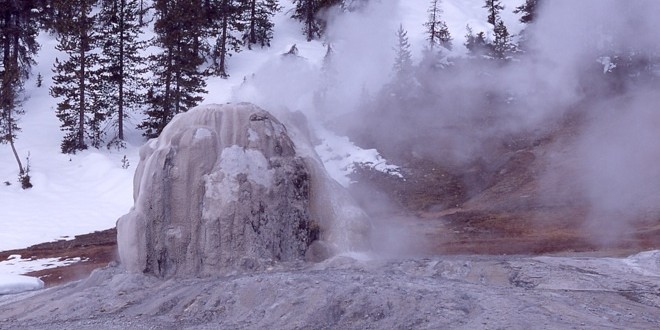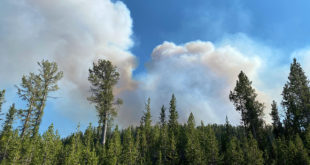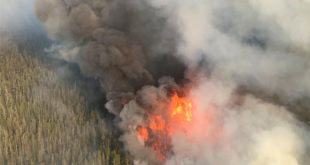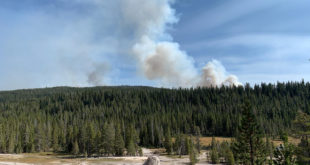With its fairly regular eruption cycle and prominent ten-foot tall cone, Lone Star Geyser is one of the standout geysers in Yellowstone. How is it, then, that it hasn’t become a major attraction on par with Old Faithful? Part of the problem, perhaps, is that you can’t drive to it.
Lone Star Geyser sits about 2.5 miles off the Grand Loop Road, with the trailhead starting near Kepler Cascades. Though the walk is a bit far, it does pass through a (small) portion of Yellowstone’s backcountry, including a meadow and some small springs. (Through much of the Park’s history, cars were allowed back to Lone Star Geyser, and the Howard Eaton Trail passed nearby; it’s now marked as the Lone Star Geyser Trail, linking the geyser area with Shoshone Lake and the Bechler Region.) The trail is also sanctioned for bike travel, which cuts down on the time between you and Lone Star, should you be inclined.
When you reach Lone Star, you’ll first notice the cone: 10 feet high and 12 feet wide, a calcareous white dappled with pink, black and yellow sinter. On average, there are two-and-a-half to three hours between eruptions, a cycle that rarely deviates. Its eruptions plume from a vent in the top, reaching heights of 30-40 feet, in a continuous stream of water and steam for about 30 minutes.
Another handicap towards Lone Star Geyser’s claim as a major attraction is the lack of Park Service reporting on the eruption times, which are not listed in the visitor centers, as opposed to features like Old Faithful, Grand, Castle, etc. However, visitors who make the trek back to Lone Star will encounter a logbook located near the geyser, which contains prior eruption times as observed by visitors. If you make your way back to Lone Star Geyser, it is highly recommended that you take the time to note Lone Star’s eruption time (should you see it erupt) so other visitors may have the benefit of that knowledge.The roots of the geyser’s name are somewhat muddled. The Hayden Geological Survey of 1872 dubbed it Solitary Geyser, but that name didn’t stick and was later given to another geyser near Old Faithful. By 1879 there were written references to Lone Star Geyser.
Even if you don’t get back to Lone Star in time to see it erupt, it is still a wonderful attraction, and well worth the hike/bike back to it.
This is the first installment in a regular series covering Yellowstone’s thermals.
 Yellowstone Insider Your Complete Guide to America's First National Park
Yellowstone Insider Your Complete Guide to America's First National Park





